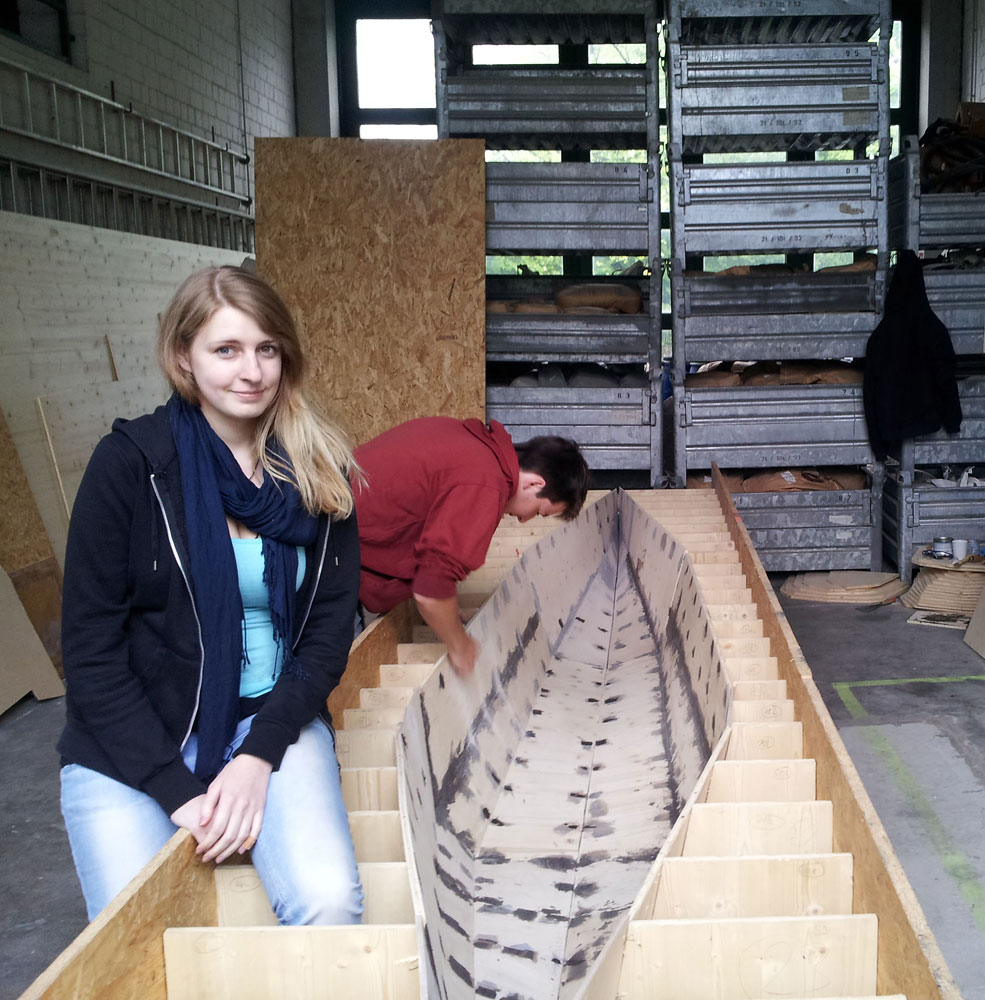Rosi and Seppi go into the water:
TUM students build concrete canoes

A boat made of concrete – can it float?
Andrea Henninger: Of course! Any material can float, depending on the shape. The largest vessels are made of steel and they don’t sink. What is most important is the shape and the way it lies in the water. The buoyancy of a ship depends on the submerged displacement. The density of a vessel is less than the density of water, so it floats on the surface.
How were the two boats built?
Andrea Henninger: First, we designed the first models in small groups. Then a computer served to create a true-to-scale CAD model, which we used as a template for the shape of the formwork. We decided to make a wooden casing.
So the formwork is made of wood and the canoes are made of concrete.
Andrea Henninger: Wood is ideal for making curved casings, because it so easy to handle. Later, we coated the formwork with a synthetic resin to have a smooth surface.
What concrete did you use? The same kind as used on construction sites?
Andrea Henninger: We experimented – and needed several attempts to find the right recipe, because we needed a very solid type of concrete. The side walls are only 4 to 8 mm thick. And the boats had to be light too. They weigh no more than 70 kilograms.
How are the boats stabilized sufficiently?
Andrea Henninger: We included two layers of glass fiber mats in grid-form to reinforce the construction. To keep the boats in shape, we fitted two frames made of PE foam into the concrete.
Who will be in the boats during the competition?
Andrea Henninger: We have a few experienced canoeists in our team. We were busy with the planning and the construction of the canoes since the end of last year – in our own workshop at the Centre for Building and Materials Testing (CBM) in Pasing. We are very excited to see how “Rosi” and “Seppi” – this is what we named the boats – will cope.
Andrea Henninger (23) is a student of Civil Engineering in her fourth semester. The Concrete Canoe Regatta – which is organized by the German concrete and cement industry – takes place every two years. On June 22, 2013, more than 100 teams will set their 70 canoes afloat in Nuremberg. They come from vocational schools, colleges, universities and other institutions that teach concrete technology.